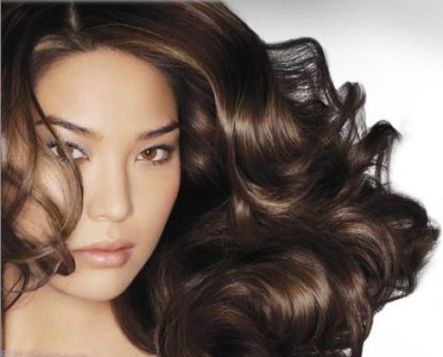Just good genes, or have they had some help? There are many hair-loss treatments on the market, so what is on offer?
1. THE HORMONE BLOCKER
Utrogestan,
prescription-only.
WHAT? Dr. Daniel Sister, a hormone specialist at BeautyWorksWest in London, says: “The hormone progesterone stops the body from converting testosterone to DHT, the hormone that causes hair to fall out.
“Progesterone is the first hormone to fall as women age.
“Treatment involves one tablet daily of bio-identical progesterone – which has synthetic progestins – or daily application of a cream with progesterone derived from yams or soya.”
EVIDENCE: When progesterone cream is applied, it reduces levels of 5-alpha reductase, a key enzyme linked to the formation of DHT, by around 70%.
This may slow or stop hair loss.
DOWNSIDE: There are no studies showing that progesterone therapy can actually make hair grow back.
2. BLOOD-FLOW BOOSTER
HairMax
harrods.com
WHAT? Looks like a lightweight plastic hairbrush but emits a red laser light from diodes between the plastic bristles. This stimulates blood flow and nutrients to the follicle, helping the body clear away DHT, say manufacturers.
EVIDENCE: Red light is used at hair-loss clinics and is known to calm inflammation, a possible cause of hair loss. In clinical studies of HairMax on 460 men and women, 93% saw increased hair growth. Most saw results in 12 to 16 weeks.
DOWNSIDE: It won’t prevent hair loss from chemotherapy or thyroid disorders. It is also unlikely to work on follicles where hair has fallen out and stopped growing for more than two years.
Consultant dermatologist Dr. Paul Farrant says: “There may be some regrowth so it’s worth a try, but no treatment will turn sparse locks into thick hair.”
3. NUDGE FROM NATURE
ThikRX
thikrx.co.uk
WHAT? A range of lotions, shampoos and supplements that use natural ingredients, including an extract of a type of palm tree called saw palmetto. These are designed to prevent harmful DHT reaching the follicle.
EVIDENCE: In a 24-week study of 19 people, 60 per cent saw increased hair growth, compared with 11 per cent who used a placebo treatment.
Dr. Paul Farrant says: “There is some evidence saw palmetto can block male hormones, but this is unlikely to be as effective as prescription drugs, although useful if you don’t want to, or cannot take the medication.”
DOWNSIDE: It’s expensive. You’ll need three kits for a 24-week course.

4. APPLIANCE OF SCIENCE
LA Science Anti-hair Loss Serum and Follicle Stimulating Shampoo,
la-science.co.uk
WHAT? They contain peptides – chemicals that form the building blocks of proteins – that mimic natural growth factors in the body, and increase blood-vessel size. These encourage blood flow to remove DHT, increase the size of the follicle for thicker hair, and extend the time hair grows.
EVIDENCE: Dr. Paul Farrant says: “There is a lot of promising research into peptides to alter the hair-growing cycle, but it’s early days.”
DOWNSIDE: Needs to be used for four months before any effects can be seen.
5. THE BLOOD-PRESSURE DRUG
Spironolactone
prescription-only.
WHAT? A diuretic used to reduce fluid in the body to treat high-blood pressure, it also slows production of male hormones and blocks the absorption of DHT by the hair follicles.
EVIDENCE: In a study, six women with androgenic alopecia were treated with it, while another six were untreated. The untreated group continued to lose hair, while four of those who took the drug did not, but did not gain it either. A further two women on higher doses did regrow some hair. Dr. Paul Farrant says: “This works to thicken hair, often for women with other symptoms of high male hormones.”
DOWNSIDE: Side effects include dizziness.
6. A SOOTHE OPERATOR
Ketoconazole Shampoo
chemistdirect.co.uk
WHAT? This anti-dandruff shampoo may also be an effective treatment for hair loss. The active ingredient ketoconazole (also known as Nizoral) prevents male hormones being taken up by hair follicles, and can calm the scalp, which improves hair health.
EVIDENCE: A study found Nizoral was more effective than low-dose Minoxidil, with an 18% increase in the number of hairs compared with 11% with Minoxidil.
“I use this if patients have a scaly scalp,” says Dr. Paul Farrant.
“Anti-fungals can promote growth in nails, but the studies on hair are weak.”
DOWNSIDE: There are no significant side effects.
7. FAKE IT LIKE CELEBRITIES
PRO-Volume Extensions,
wonderfulhairextensionist.co.uk, Intralace System, lucindaellery-hairloss.co.uk
WHAT? The secret of many an older celebrity’s thick, tumbling locks is extensions. Can there be any other explanation for Nigella’s normally wispy waves suddenly transforming to endless, glorious and glossy curls in photos and on her TV show? But not all extensions can be used on thinning hair.
Thick extensions with lumpy, hot-glued bonds, are visible and also damage existing hair. PRO-Volume real hair extensions have near-invisible bonds that slip over existing hair strands without damaging them, and can triple hair volume. They last about ten weeks.
If there is too much hair loss for extensions, then a “hair system”, left, may provide an answer. A fine mesh is placed over the balding areas and the client’s own hair is pulled through gently. Real hair extensions are then added to the lace.
EVIDENCE: The right extensions look extremely natural, and give instant fullness.
DOWNSIDE: These treatments won’t prevent or reduce hair loss.
8. PEPPERPOT SPRINKLES
Nanogen Fibres
nanogen.co.uk
WHAT? Tiny fibres made of keratin (the substance hair is made of) are sprinkled on to the hair from a “pepperpot” device. They cling to your hair by an electrostatic charge, making locks look thicker, so you lose the look of a wide parting or shiny scalp.
EVIDENCE: Studies show Nanogen fibres bind strongly to natural hair, so won’t fall off in use. A locking mist spray will make the effect waterproof.
DOWNSIDE: Not ideal to use all over, but good for filling wider partings. The main theory is that some people have a gene that means hair follicles are vulnerable to the hormone testosterone.
